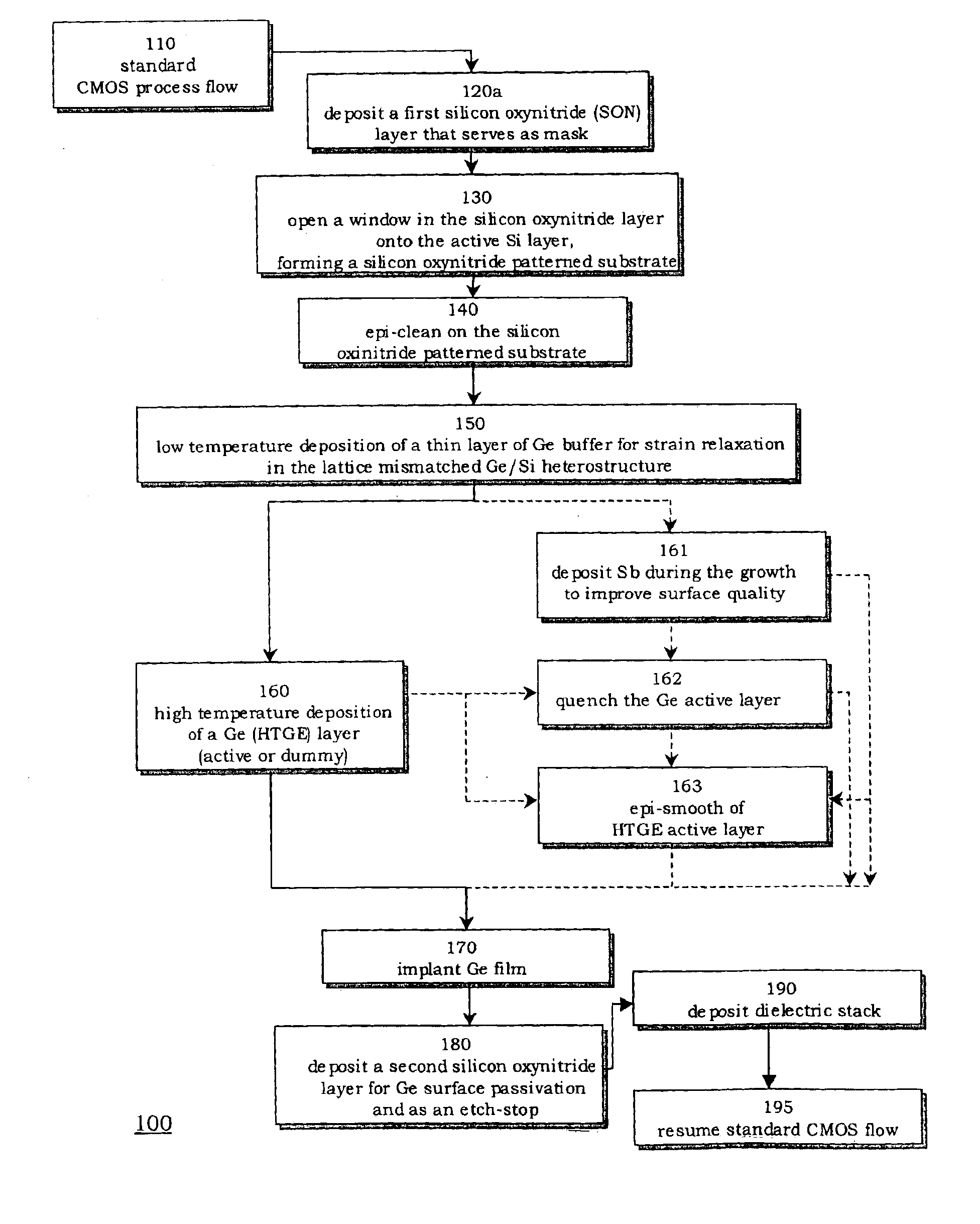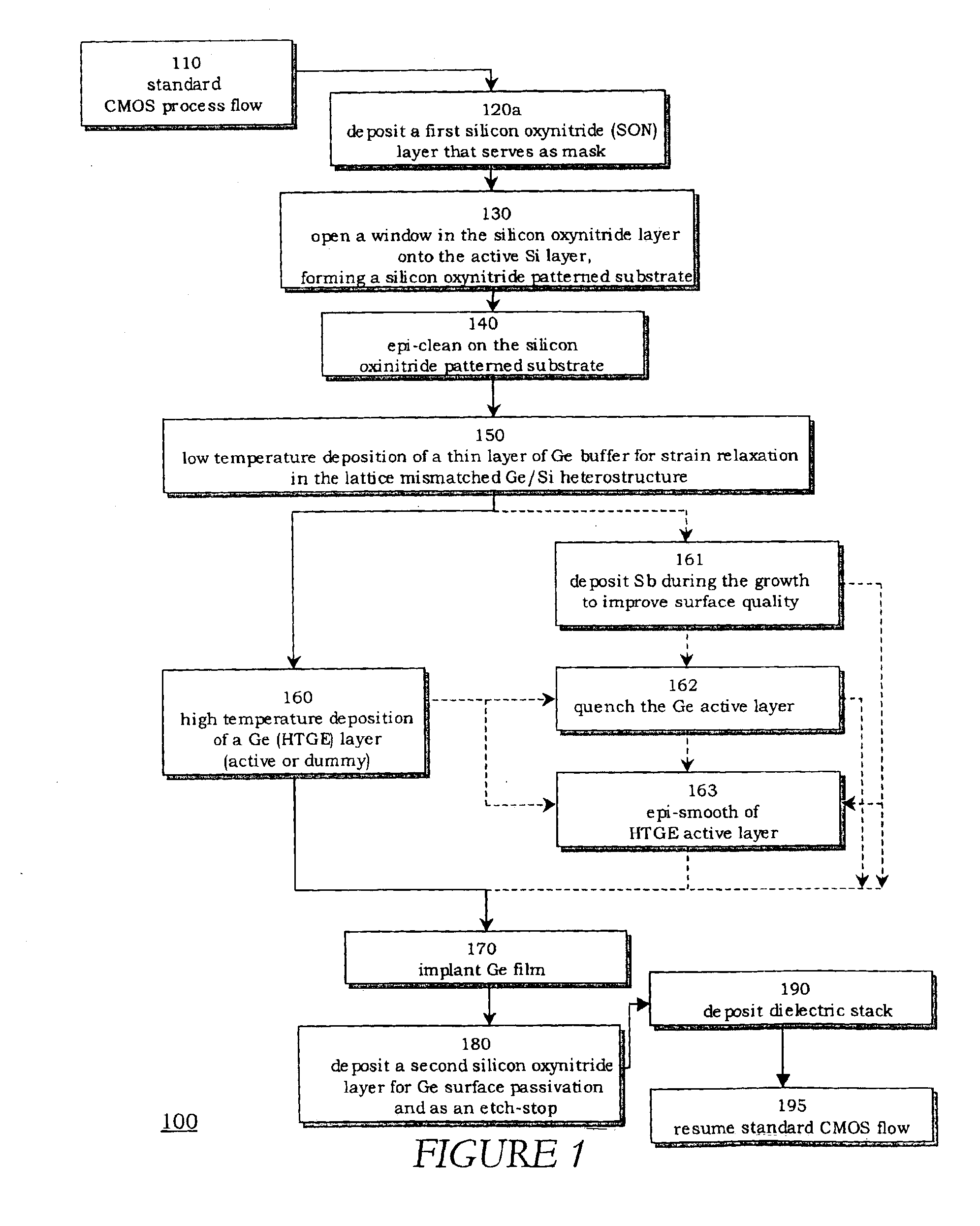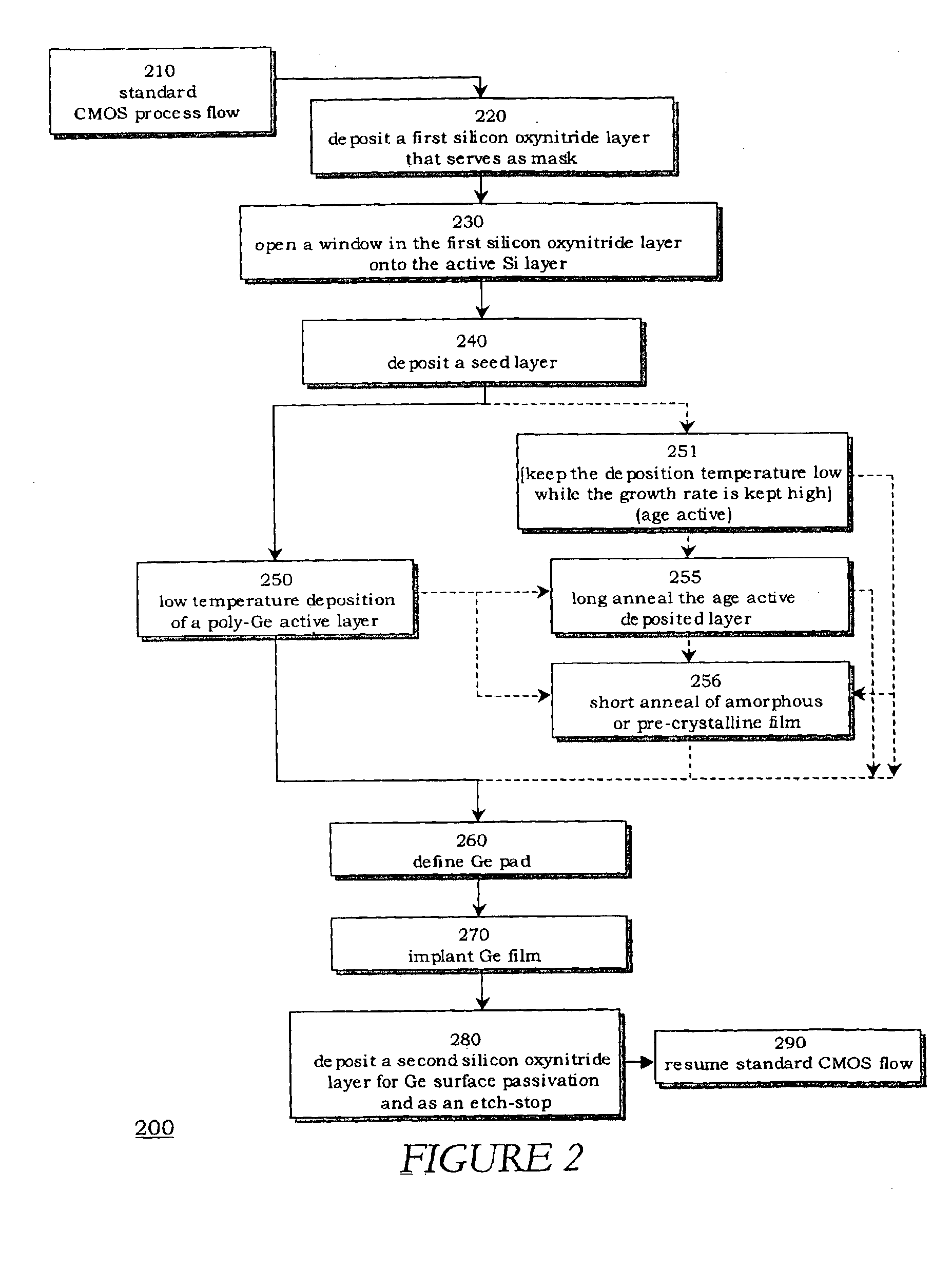Methods of incorporating germanium within CMOS process
a technology of germanium and cmos, applied in the direction of basic electric elements, electrical equipment, semiconductor devices, etc., can solve the problems of ineffective germane-deposition catalysis on the son surface, layer wicking,
- Summary
- Abstract
- Description
- Claims
- Application Information
AI Technical Summary
Benefits of technology
Problems solved by technology
Method used
Image
Examples
first embodiment
[0014]Referring now to FIG. 1, therein is shown a flow diagram illustrating the process 100 for incorporating germanium growth in a standard CMOS process. In step 110, the manufacturing of a chip employs a standard CMOS flow with a silicon substrate. The process 100 continues until the highest temperature step, typically the salicide annealing, is performed. In step 120, the process 100 deposits a first silicon oxynitride layer. Step 120 is typically a conventional CMOS process step. One of ordinary skill in the art should recognize that the deposition of one or more silicon oxynitride layers is typical in a CMOS process. Similar or various types of compositions of silicon oxynitride can be practiced without departing from the spirit of the present invention. The first oxynitride layer is then patterned in order to expose areas of the underlying Si substrate in the process step 130. One embodiment illustrating the present invention includes depositing the silicon oxynitride layer by...
second embodiment
[0031]In FIG. 2, therein is shown a flow diagram illustrating a process for poly-Ge growth. At step 210, the manufacturing of a chip employs a standard CMOS flow with a silicon substrate using a silicon-on-insulator process. The process 200 continues until the salicide annealing. In step 220, the process 200 deposits a first silicon oxynitride layer. This oxynitride layer is then patterned in order to expose areas of the underlying Si substrate in the process step 230.
[0032]At step 230, the process 200 opens a window in the first silicon oxynitride layer onto the active silicon layer. This step defines the opening to the active Si substrate. The substrate can be n-doped. The active window shape created in step 230 is optimized considering photonic design requirements. A standard, ex-situ wet etching / cleaning step is performed prior to sample loading in the reactor where the subsequent process step will take place. An in-situ high-temperature step is optional.
[0033]The process 200 de...
PUM
 Login to View More
Login to View More Abstract
Description
Claims
Application Information
 Login to View More
Login to View More - R&D
- Intellectual Property
- Life Sciences
- Materials
- Tech Scout
- Unparalleled Data Quality
- Higher Quality Content
- 60% Fewer Hallucinations
Browse by: Latest US Patents, China's latest patents, Technical Efficacy Thesaurus, Application Domain, Technology Topic, Popular Technical Reports.
© 2025 PatSnap. All rights reserved.Legal|Privacy policy|Modern Slavery Act Transparency Statement|Sitemap|About US| Contact US: help@patsnap.com



